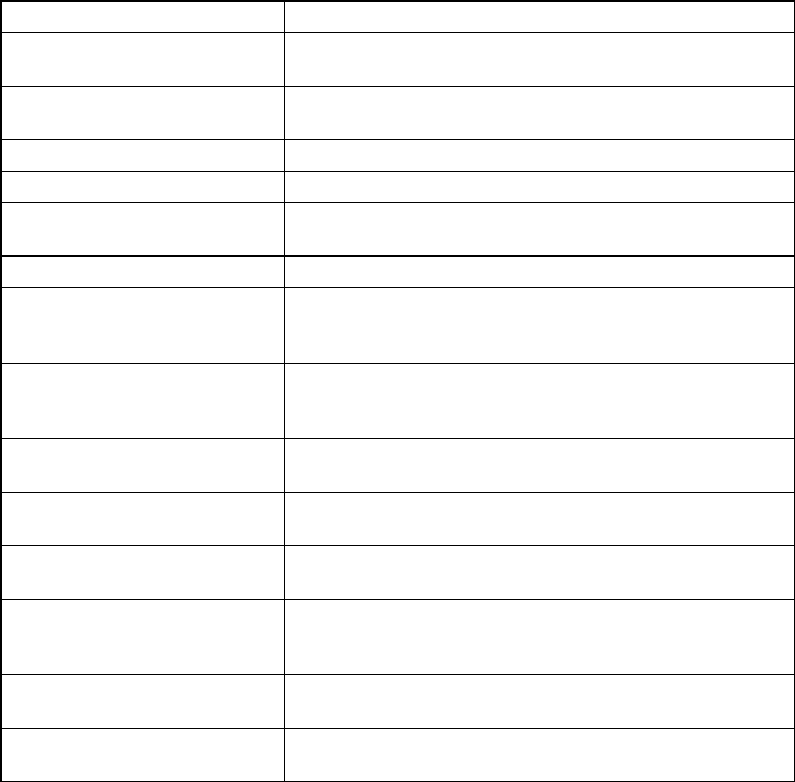User Guide
Table Of Contents
- HP Remote Insight Lights-Out Edition II User Guide
- Notice
- Contents
- Operational overview
- Installing the RILOE II
- Configuring the RILOE II
- Using the RILOE II
- Accessing RILOE II for the first time
- Features of the RILOE II
- Managing the user and configuration settings of the RILOE II
- Using the Remote Console
- Terminal Services pass-through option
- Using virtual devices
- Resetting the RILOE II to the factory default settings
- Getting help
- Pocket PC access with RILOE II
- RILOE II security
- Systems Insight Manager integration
- Directory services
- Overview of directory integration
- Benefits of directory integration
- How directory integration works
- Advantages and disadvantages of schema-free and HP Extended
- Setup for Schema-free directory integration
- Setting up HP schema directory integration
- Features supported by HP schema directory integration
- Setting up directory services
- Directory services support
- Schema required software
- Schema installer
- Management snap-in installer
- Directory services for Active Directory
- Active Directory Lights-Out management
- Directory services for eDirectory
- User login using directory services
- Directory settings
- Directory-enabled remote management
- Scripting, command line, and utility options
- Overview of the Lights-Out DOS utility
- Lights-Out directories migration utilities
- Compatibility
- Pre-migration checklist
- HP Lights-Out directory package
- HPQLOMIG operation
- Finding management processors
- Upgrading firmware on management processors
- Selecting a directory access method
- Naming management processors
- Configuring directories when HP Extended schema is selected
- Configuring directories when schema-free integration is sele
- Setting up management processors for directories
- HPQLOMGC operation
- Lights-Out Configuration Utility
- Using Perl with the XML scripting interface
- HPONCFG
- Remote Insight command language
- RIBCL sample scripts
- RIBCL general guidelines
- XML header
- Data types
- Response definitions
- RIBCL
- LOGIN
- USER_INFO
- ADD_USER
- DELETE_USER
- GET_USER
- MOD_USER
- GET_ALL_USERS
- GET_ALL_USER_INFO
- RIB_INFO
- RESET_RIB
- GET_NETWORK_SETTINGS
- MOD_NETWORK_SETTINGS
- GET_GLOBAL_SETTINGS
- MOD_GLOBAL_SETTINGS
- CLEAR_EVENTLOG
- UPDATE_RIB_FIRMWARE
- GET_FW_VERSION
- HOTKEY_CONFIG
- DIR_INFO
- GET_DIR_CONFIG
- MOD_DIR_CONFIG
- SERVER_INFO
- RESET_SERVER
- INSERT_VIRTUAL_FLOPPY
- EJECT_VIRTUAL_FLOPPY
- COPY_VIRTUAL_FLOPPY
- GET_VF_STATUS
- SET_VF_STATUS
- GET_HOST_POWER_STATUS
- SET_HOST_POWER
- GET_VPB_CABLE_STATUS
- GET_ALL_CABLES_STATUS
- GET_TWOFACTOR_SETTINGS
- MOD_TWOFACTOR_SETTINGS
- Troubleshooting the RILOE II
- Supported client operating systems and browsers
- Supported hardware and software
- Server PCI Slot and Cable Matrix
- Network connection problems
- Alert and trap problems
- NetWare initialization errors
- Miscellaneous problems
- Accessing System Partition Utilities
- Inability to reboot the server
- Inability to upgrade the RILOE II firmware
- Incorrect time or date of entries in the event log
- Interpreting LED indicators
- Invalid Source IP address
- Login name and password problems
- Remote Console mouse control issue
- Resetting the RILOE II to Factory Default Settings
- Virtual Floppy media applet is unresponsive
- Video Problems
- Troubleshooting the host server
- Directory Services errors
- Directory Services schema
- Technical support
- Regulatory compliance notices
- Acronyms and abbreviations
- Index

Scripting, command line, and utility options 111
Command line argument Description
/RESET_RILOE
Resets the RILOE II management processor to default factory
settings.
/DETECT
Detects the RILOE II management processor on the target
server.
/RESET_RILOE Resets the RILOE II management processor.
/VIRT_FLOPPY Ignores the virtual floppy inserted error.
/MIN_FW-xxx
Enables you to set the minimum firmware version on which the
RILOE II management processor runs.
/GET_STATUS Returns the status of the RILOE II management processor.
/GET_HOSTINFO
Retrieves and displays the current host server information on
the RILOE II management processor and displays the server
name and number.
/GET_USERINFO
Obtains the current users stored in the RILOE II management
processor board and displays the names, login names, and
security mask information.
/GET_NICCONFIG
Retrieves and displays the NIC settings stored in the RILOE II
management processor.
/GET_DHCPCONFIG
Retrieves and displays the DHCP settings stored in the RILOE II
management processor.
/GET_DIRCONFIG
Retrieves and displays the DIRECTORY settings in the RILOE II
management processor.
/WRITE_XML=path\file
name.ext
Reads the settings on the RILOE II management processor and
writes the NIC, DHCP, DIRECTORY, and user settings into an
XML hardware configuration script file.
/LOAD_XML=path\file name.ext
Loads the script file and applies its changes to the current
configuration on the RILOE II management processor.
/VERIFY_XML
Verifies the accuracy of the script file and generates an error
message for any incorrect data.
RIBCL XML Commands for CPQLODOS
CPQLODOS uses the same RIBCL XML commands as CPQLOCFG for the <MOD_NETWORK_SETTINGS>,
and the <MOD_DIR_CONFIG> XML scripting language blocks. Only those parameters unique to
CPQLODOS are discussed. For more information on <MOD_NETWORK_SETTINGS>, and
<MOD_DIR_CONFIG> refer to:
• MOD_NETWORK_SETTINGS
• MOD_DIR_CONFIG
The following XML blocks are unique to CPQLODOS:
• CPQLODOS (on page 111)
• ADD_USER (on page 112)
CPQLODOS
This command is used to start and end a CPQLODOS session. It can be used only once in a script, and it
must be the first and last statement in an XML script.
Example:
<CPQLODOS VERSION="2.0">
</CPQLODOS>










